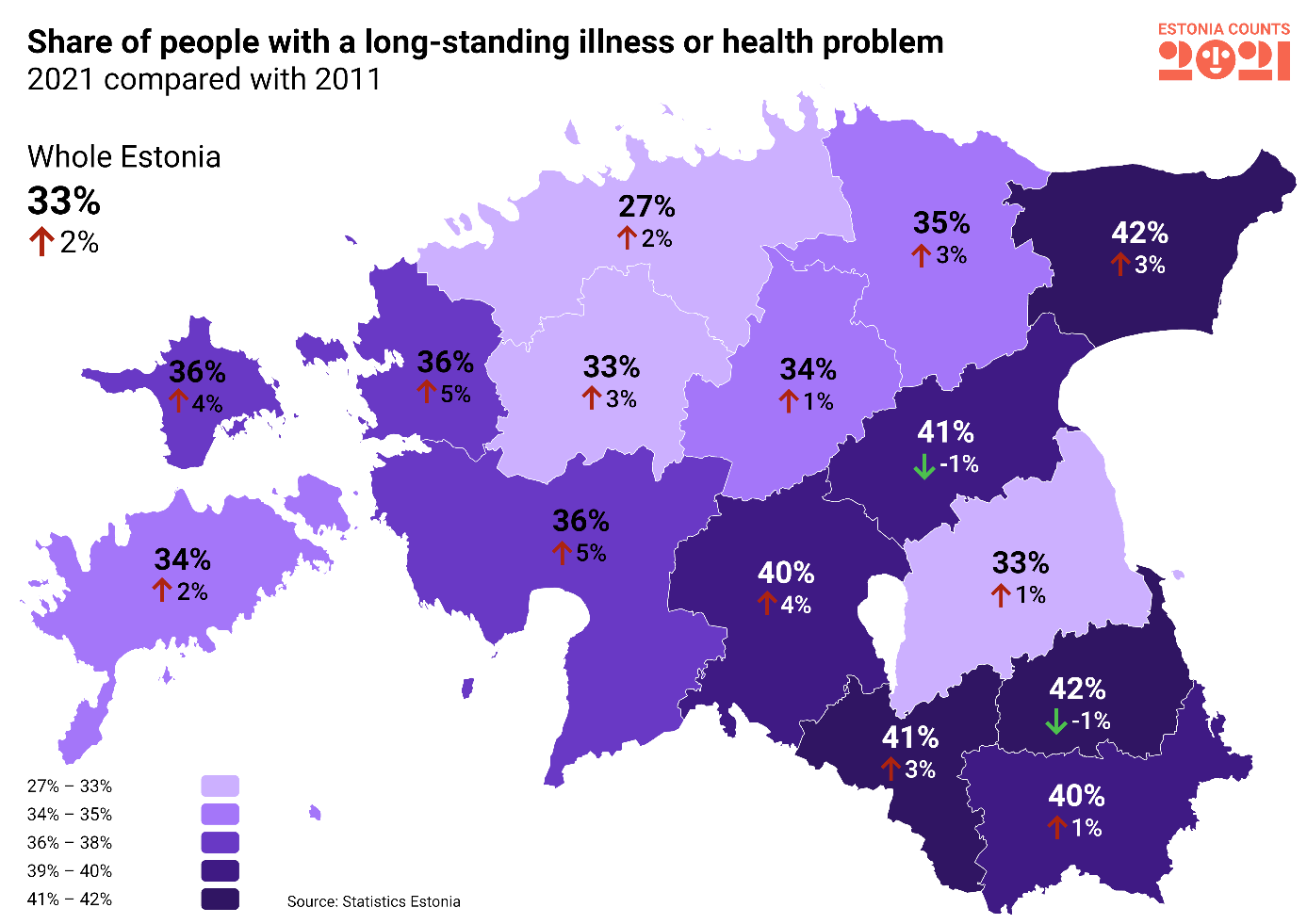Young people have more health problems than 10 years ago
Text Mark Taylor Photo Sasun Bughdaryan / Unsplash
According to the 2021 census, an estimated one-third of the population have a long-term illness or health problem. This is 2 percentage points more than in the previous census in 2011, with 28 per cent of the population limited in their daily activities because of a health problem.
As part of the census survey, people were asked if they had any long-standing illnesses or health problems. “It was irrelevant whether or not a disability or reduced capacity for work had been determined. What mattered was the person’s assessment. It was also asked to what extent the person had felt limited in some of the daily activities because of a health problem in th e past six months,” explained Liina Osila, Population and Housing Census project manager at Statistics Estonia.
The results of the 2021 census show that a third (33 per cent) of Estonia’s population have a long-standing illness or health problem. This figure was slightly lower – 31 per cent – at the time of the previous census in 2011.
An estimated 28 per cent of the population feel limited in their daily activities because of a health problem. 18 per cent of them said they were somewhat limited and 10% felt severely limited. In the previous census, 28 per cent of the population also reported being limited due to a health problem, but back then 4 per cent more people said they were severely limited (14 per cent).
The biggest positive change is that in the oldest age group (65 and over), there has been a significant decrease in the proportion of people who feel that health problems severely limit their daily activities, from 39 per cent in 2011 to 24 per cent in the 2021 census. “The fact that older people, despite their health problems, do not feel significantly limited in their daily lives shows that, in addition to good health services, our society is increasingly attentive to different needs, and this allows people to live a full life even with health problems,” said Osila.
The prevalence of health problems among young people, however, is now higher than at the time of the previous census. 7 per cent of children aged 0–14 had a long-standing illness or health problem in 2011, compared with 8 per cent now. An even bigger increase is seen in the 15–29 age group: 14 per cent of people in this bracket had a long-term illness or health problem in 2011, whereas now 17 per cent do.
35 per cent of women said they had a long-term health problem, while the figure was lower for men – 29 per cent. This was also the case in the previous census (33 per cent for women, 28 per cent for men). “However, if we observe the gender gap by age groups, a significant difference is only seen among those aged 65 and over. The figures for younger age groups remain similar to before. It should be noted that the average life expectancy of women is also somewhat higher, which is why there are more women than men in the older age group,” Osila explained.
The largest share of people with long-standing health problems is found in Põlvamaa and Ida-Virumaa, where 42 per cent of people live with long-term health issues, which is almost 9 per cent more than the Estonian average (33 per cent). These figures were of the same order of magnitude in the previous census as well (43 per cent in Põlvamaa, 39 per cent in Ida-Virumaa).
Inhabitants of Harjumaa are the healthiest, with 27 per cent estimated to have a long-standing health problem. This is nearly 6 per cent less than the average in Estonia. However, compared with 2011, the percentage has increased slightly in Harjumaa as well (2011: 25 per cent).
The census results also highlight the link between educational attainment and health status, which has been confirmed in previous studies. “Looking at how educational attainment relates to health, it turns out that people with higher education have the lowest rates of long-term illness or health problems,” Osila noted.
34 per cent of people with higher education have a health problem and 27 per cent feel limited in their daily activities because of it. Of those with secondary education, 39% report having a long-standing health problem and a third (33 per cent) are limited in their everyday activities. Among people with basic education, 40 per cent have a health problem and 36 per cent feel limited by it in their daily activities.

To learn more about this and similar topicsCensus Harjumaa Health Health Problems Long-term Illness Population Census Põlvamaa Statistics Estonia










